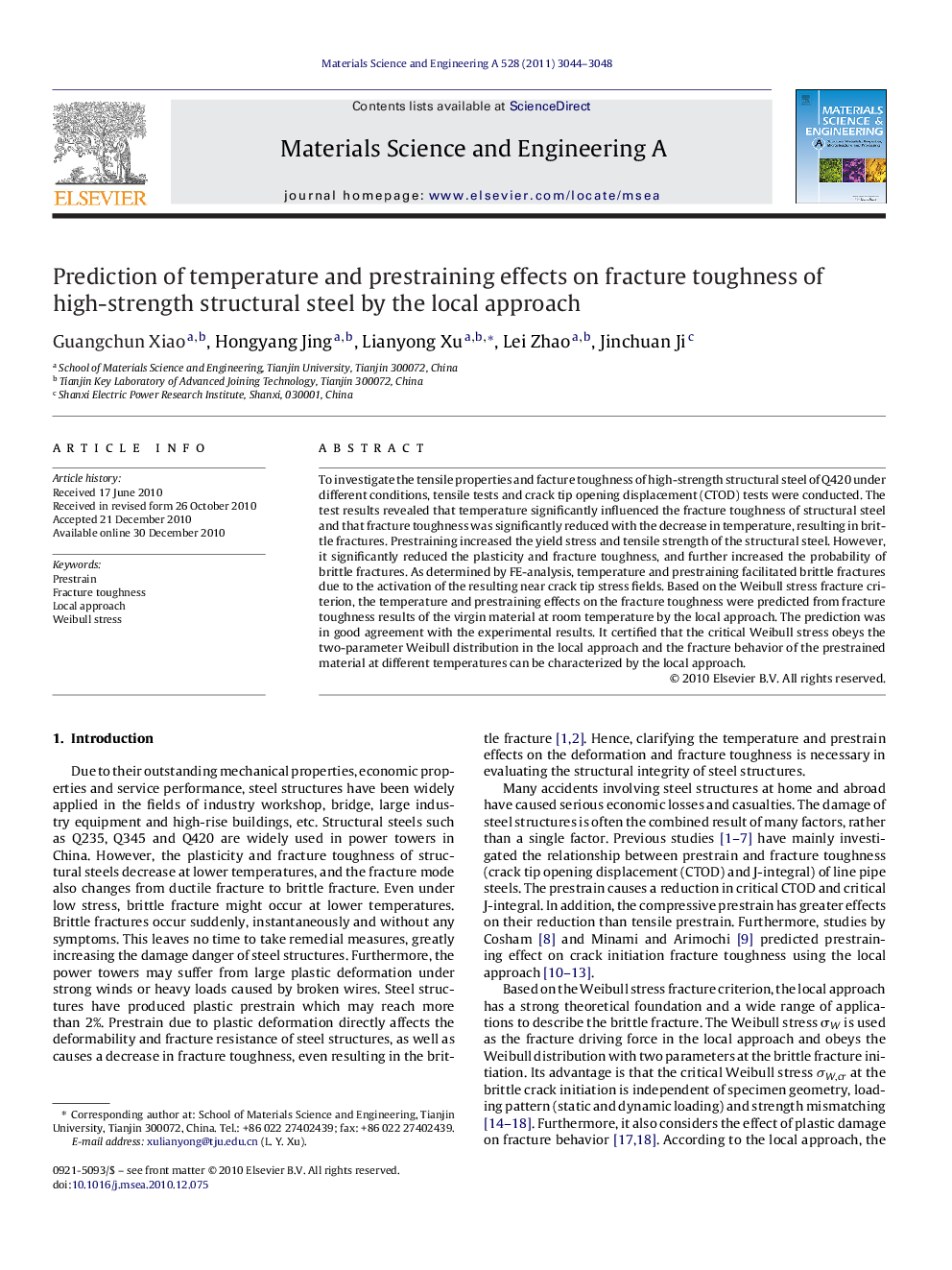| Article ID | Journal | Published Year | Pages | File Type |
|---|---|---|---|---|
| 1578504 | Materials Science and Engineering: A | 2011 | 5 Pages |
To investigate the tensile properties and facture toughness of high-strength structural steel of Q420 under different conditions, tensile tests and crack tip opening displacement (CTOD) tests were conducted. The test results revealed that temperature significantly influenced the fracture toughness of structural steel and that fracture toughness was significantly reduced with the decrease in temperature, resulting in brittle fractures. Prestraining increased the yield stress and tensile strength of the structural steel. However, it significantly reduced the plasticity and fracture toughness, and further increased the probability of brittle fractures. As determined by FE-analysis, temperature and prestraining facilitated brittle fractures due to the activation of the resulting near crack tip stress fields. Based on the Weibull stress fracture criterion, the temperature and prestraining effects on the fracture toughness were predicted from fracture toughness results of the virgin material at room temperature by the local approach. The prediction was in good agreement with the experimental results. It certified that the critical Weibull stress obeys the two-parameter Weibull distribution in the local approach and the fracture behavior of the prestrained material at different temperatures can be characterized by the local approach.
Research highlights▶ Prestrain and temperature have a significant influence on fracture toughness. ▶ The near-crack-tip stress is elevated by the prestrain and temperature. ▶ Effects of prestrain and temperature on CTOD were predicted by the local approach.
